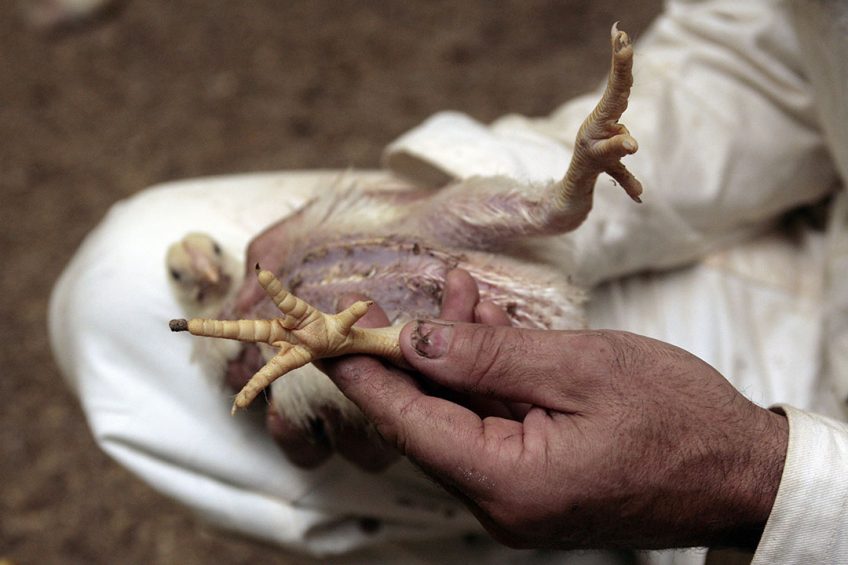Using infrared thermography for evaluating BCO lameness

Lameness has been reported to affect up to 1% of all market weight broilers and bacterial chondronecrosis with osteomyelitis (BCO) is a leading cause. A study at the university of Arkansas used infrared thermography to detect localised areas of increased heat production due to inflammation.
Broilers can become lame from non-infectious and infectious origins. Bacterial chondronecrosis with osteomyelitis is a bacterial infection of the growth plates in the leg bones, leading to necrosis and eventually lameness. The etiology of BCO is unknown and lameness incidence attributable to BCO in commercial flocks is spontaneous. The mechanical stress of walking may create microfractures in the proximal growth plates of the femora and tibiae, thereby creating wound sites that are conducive for hematogenous bacterial colonisation. As with all pathogenic colonisation, BCO lesions result in inflammation, pain, consequently stress and lameness, and is therefore a major welfare issue, particularly when the bird cannot reach feed and water.
In the trail infrared thermography was used to take thermal images of the legs of 5 randomly selected broilers from each pen on days 7 (6 pens), 9 (6 pens), 28 (6 pens), 30 (12 pens), 38 (12 pens), and 56 (12 pens). Infrared thermography (IRT) is a non-invasive technique for measuring infrared radiation from an object and can be used to evaluate clinical health. After grow out the birds were euthanised and the severity of the BCO lesions formed in the right and left proximal femoral and tibial head were assessed macroscopically.
It was the researchers hypothesis that changes in IRT surface temperatures at key locations of the legs would allow the detection of BCO non-invasively. They utilised a wire flooring model to experimentally induce higher incidences of BCO lameness than what commonly occurs under commercial conditions of broiler production, without purposefully exposing them to pathogenic bacteria. The wire flooring creates an unstable walking surface that increases hear-stress and mechanical torque on the growth plates in leg bones, thereby exacerbating BCO and the incidence of lameness. The present studies evaluated the effect of 3 light intensities (2, 5, and 10 lux) and 2 flooring types (litter and wire) on IRT surface temperatures measured in the hock joints, shanks, and feet of broiler chickens. Leg surface temperatures were measured from IRT images taken pre-mortem and compared to corresponding proximal femoral and tibial head BCO lesion severity scores taken post-mortem in both clinically healthy (sound) and lame broilers. The studies also allowed determination of any effects of lameness on leg surface temperatures.
In conclusion, lame broilers had more severe BCO lesions in the proximal femora and tibiae and lower IRT surface temperatures of the hock, shank and footleg regions. There were inconsistent effects of light intensity and flooring on leg health, as measured by lesion severities and lameness incidence attributed to BCO. Lameness incidence for broilers on wire flooring was over 3-fold higher in Study 1 than Study 2 and the measures in this study could not explain these differences. Due to the spontaneous nature of BCO lameness incidence, more research is warranted to elucidate predisposing factors leading to BCO lameness. These results indicate that IRT is more accurate at identifying the increased leg skin surface temperature of subclinical BCO lesions than the decreased skin surface temperature of clinical BCO lesions and may provide a tool for intervention or breeding strategies to reduce BCO lameness incidence in broiler chickens.
 Beheer
Beheer







 WP Admin
WP Admin  Bewerk bericht
Bewerk bericht